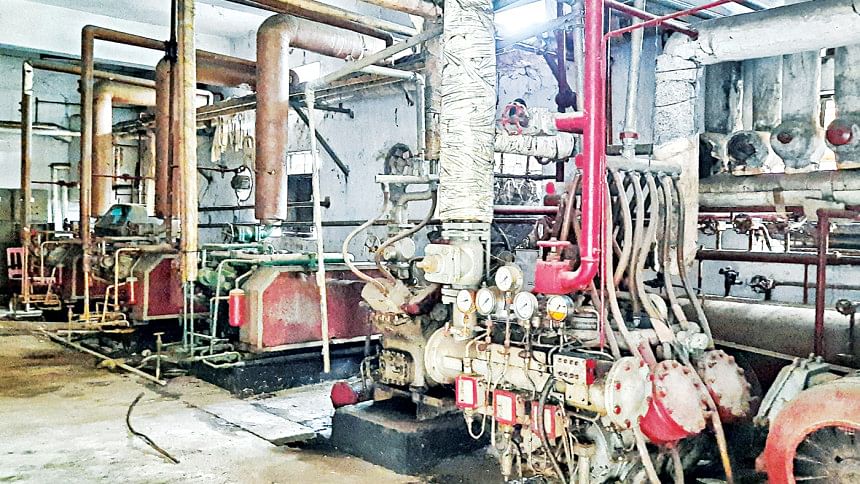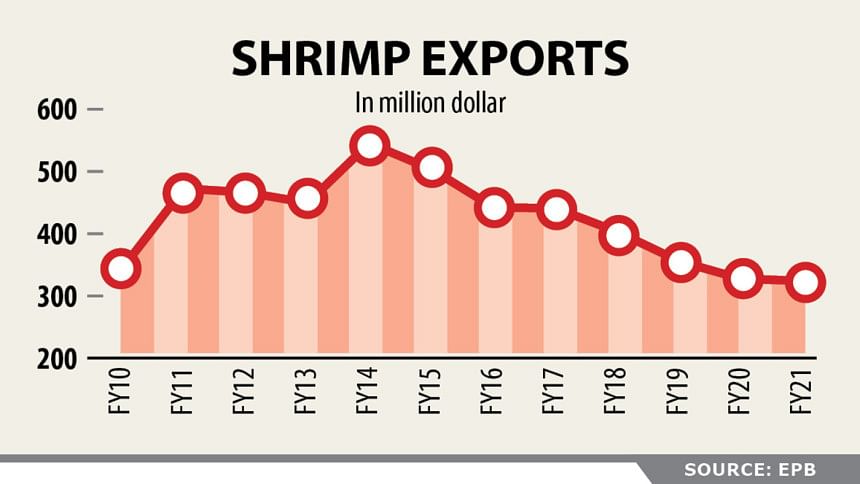Shrimp processors closing down

Bangladesh's frozen shrimp processing industry is struggling to survive as factories are closing down one after another due to a lack of raw materials, competition with cheaper white-leg shrimp vannamei in the export markets and inadequate government support, according to the Bangladesh Frozen Foods Exporters Association (BFFEA).
Now 47 of 105 factories remain operational but more than half of them are struggling to survive, mainly because of shortage of shrimps, which can compete with vannamei in the foreign markets.

As a result, the livelihoods of roughly six million people who are directly or indirectly dependent on the shrimp industry, are now in jeopardy.
Industry operators said most of the fish and shrimp processing factories were established in the last three decades encouraged by export prospects to the EU and US markets.
And most of the fish and shrimp processing factories were established in Khulna, the southwest coastal division which produces the bulk of black tiger bagda and freshwater prawns.
Now, 32 of the 60 factories in Khulna division are operational. Similarly, 15 of the 43 factories in Chattogram division have continued production.
Insiders said black tiger shrimp and prawn are the main raw materials for these processing plants but production of exportable shrimps has not grown enough to keep the plants operational.
At the same time, increased farming of vannamei shrimps in countries such as India, Vietnam, and its relatively cheaper prices than locally farmed black tiger and prawns hurt export significantly.
Bangladesh fetched $550 million in export earnings in fiscal year 2013-14. Since then, export earnings have been falling consistently.
In fiscal 2020-21, export receipts declined 1.15 per cent year-on-year to $328 million, showed data by Export Promotion Bureau.
BFFEA Vice President S Humayun Kabir told The Daily Star that the absence of advanced and long-term planning was also to blame for the industry's dismal state.
When fully operational, the industry has a combined capacity to produce 4 lakh tonnes of shrimp annually.
"But now we are getting just 10 per cent, or 40,000 tonnes to 45,000 tonnes, of that amount," he said, adding that a lack of shrimp supply was the main reason why many factories have closed down.
During a visit to shrimp processing factories in the Rupsha upazila of Khulna, it was seen that many factories had been closed for years.
Anwarul Kadir, an economist and member of Transparency International Bangladesh (TIB), said unwillingness to repay loans and product tampering at shrimp processing factories also contributed to the industry's collapse.
Two-thirds of the factory owners even channelled their bank loans into other sectors in a bid to make more money and as a result, many are unable to pay instalments on time, he added.
After farmers stock their shrimp at warehouses, frozen shrimp exporters buy it from commission agents before processing them to ship abroad.
Besides, other issues such as a shortage of fry and feed continue to plague the industry while cyclones Amphan and Yaas made things worse. As a result, the cost of shrimp fry and feed has risen.
Hatcheries in the Khulna region have failed to produce shrimp fry as per the demand for the past five years now, said Golam Kibria Ripon, general secretary of Khulna Divisional Fry Businessmen's Association.
"We need 160 crore to 170 crore fry but we get merely 20 to 25 per cent of this amount," he added
According to the local office of the fisheries department in Khulna, shrimp is cultivated on about 260,000 hectares of land in the coastal districts each year.
Of it, 152,000 hectares are in Khulna, Bagerhat and Satkhira districts.
Kazi Belayet Hossain, former president of the Bangladesh Frozen Foods Exporters Association, said exporters could get a loan for one year at 4 per cent interest under the government's stimulus package for the sector.
"However, the banks are giving 13 to 14 conditions," he added.

 For all latest news, follow The Daily Star's Google News channel.
For all latest news, follow The Daily Star's Google News channel. 



Comments